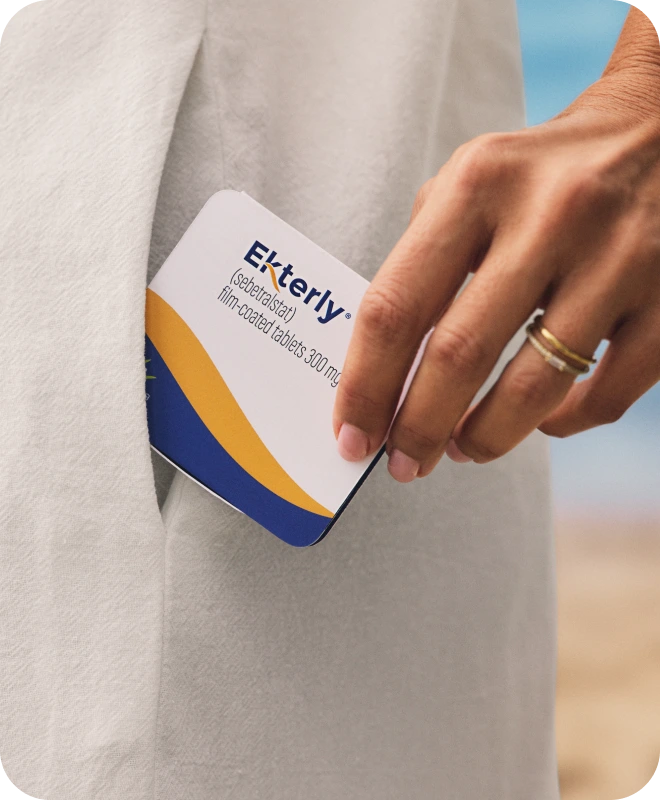You are about to leave EKTERLY.com
You will be redirected to a third-party website
not affiliated with KalVista Pharmaceuticals.
This website is intended for US residents.
Even if you’re on preventative therapy, you should always have an on-demand HAE treatment (also known as rescue or acute therapy) on you so you can respond to attacks if and when they happen. If you aren’t currently prescribed an on-demand treatment, talk to your doctor about your options.
Preventative treatment
Preventative treatment is taken regularly
with the goal of reducing the number
and
severity of HAE attacks.
On-demand treatment
On-demand treatment is used to treat HAE
attacks as they occur and can help
reduce
their length and severity.
Attacks cause significant disruptions to the lives of people with HAE, requiring them to modify their lifestyles and daily routines.
In one study,
90% of people
on preventative treatment reported still
experiencing attacks
in the previous 12 months
On average, people on preventative
treatment requested
14 doses
of on-demand treatment per year
On-demand treatment is a necessary part of HAE management and works best when taken at the first sign of symptoms, but many people receiving injectable on-demand therapy often delay treatment or don’t treat attacks at all.
3.8 hours
was the average time people with HAE
waited to treat an attack*
57%
of people with HAE do not treat all
their attacks, which may lead to prolonged
swelling
and pain†
*Results from a 2023 HAE Association survey of 94 people taking either on-demand treatment or both on-demand and preventative treatment.
†Results from a 2022 HAE Association survey of 107 people taking either on-demand treatment or both on-demand and preventative treatment.
On-demand treatments can halt attack progression, but
it takes time for your body to clear the swelling. Treating as early as
possible can lead to less severe attacks and a faster recovery.

 Actor portrayal
Actor portrayal
EKTERLY is a prescription medicine used to treat sudden (acute) attacks of hereditary angioedema (HAE) in adults and children aged 12 years of age and older. It is not known if EKTERLY is safe and effective in children under 12 years of age.
Before taking EKTERLY, tell your healthcare provider about all of your medical conditions, including if you:
Tell your healthcare provider about all of the medicines you take, including prescription and over-the-counter medicines, vitamins, and herbal supplements. Taking EKTERLY with certain other medicines can cause side effects or affect how well EKTERLY or the other medicines work. Especially tell your healthcare provider if you take any of the following, as their use with EKTERLY is not recommended: itraconazole, phenytoin, efavirenz.
Know the medicines you take. Keep a list of them to show your healthcare provider or pharmacist when you get a new medicine.
The most common side effects of EKTERLY include headache. For more information, ask your healthcare provider or pharmacist. Talk to your doctor for medical advice about side effects.
You are encouraged to report side effects related to KalVista products by calling 1-855-258-4782. If you prefer, you may contact the U.S. Food and Drug Administration (FDA) directly. Visit www.fda.gov/medwatch or call 1-800-FDA-1088.
Please click here for full Prescribing Information, including Patient Information.